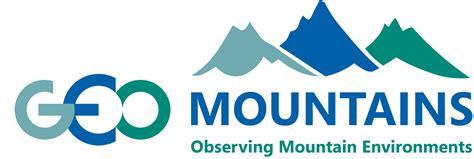Global Network for Observations and Information in Mountain Environments

This article introduces the GEO Mountains Inventory of In Situ Observational Infrastructure, part of the GEO Mountains Initiative being co-led by Adaptation at Altitude Programme Partners MRI. The In Situ Observatory shares information on in situ observatories and other infrastructure (and associated datasets) in the mountains.
March 2022 saw the launch of the GEO Mountains General Inventory, a free online resource that seeks to provide comprehensive metadata related to open datasets and data portals that may be useful in the context of mountainous applications.
Summary
Mountainous regions provide numerous goods and services to both highland and lowland populations globally. However, climatic and environmental changes, large-scale political and socio-economic transformations, and the unsustainable management of natural resources threaten this increasingly. Decisions on policy and investment, from the level of local governments to international agencies, must be based on knowledge that reflects both the generalities and specificities of mountainous regions. The paucity of observations from high-elevation regions and associated major gaps in the understanding of mountainous systems thus represent key challenges that must be overcome.
GEO Mountains (Group on Earth Observations Global Network for Observations and Information in Mountain Environments) – an Initiative in the 2020-2022 Work Programme of the Group on Earth Observations (GEO) – aims to bring together research institutions and mountain observation networks to enhance the discoverability, accessibility, and usability of a wide range of relevant data and information pertaining to environmental and socio-economic systems – both in situ and remotely sensed – across global mountain regions. In doing so, we hope to improve access to such data for the scientific research community, decision makers at local, national, and regional levels, and other interested parties.
The four more specific objectives of GEO Mountains are:
- To identify and satisfy the data and information needs of a diverse range stakeholders operating in the mountain sphere
- To improve monitoring and scientific understanding of mountain processes and phenomena, especially under change
- To build, connect, and communicate with the community of mountain researchers, practitioners, and policy makers
- To develop collective reporting capacity that responds to pre-identified assessment and policy needs
Ultimately, GEO Mountains hope to help ensure that, as a context, mountains assume and retain a prominent position in all major global policy agendas, such as the UN 2030 Agenda for Sustainable Development, the Sendai Framework for Disaster Risk Reduction, the Paris Agreement, and assessments of the Intergovernmental Panel on Climate Change (IPCC) and the Intergovernmental Science-Policy Platform on Biodiversity and Ecosystem Services(IPBES).
Improving data access: GEO Mountains Inventory of In Situ Observational Infrastructure
Recent research has highlighted a need for a persistent database into which information about in situ observatories and other infrastructure in the mountains of the world can be compiled, and via which associated datasets can be more easily discovered and accessed. This is important because a considerable proportion of in situ observations in mountains are made for research rather than operational purposes, leading to a diverse and somewhat fragmented ‘data landscape’. Put simply, it is often unclear who is measuring what, where, how, and why!
In response, GEO Mountains, in close collaboration with the Mountain Research Initiative’s Mountain Observatories and Elevation Dependent Climate Change Working Groups, are continuously compiling information on in situ observatories and other infrastructure and making ti available through the Inventory of In Situ Observational Infrastructure. This work builds upon previous contributions made by the community under the now-superseded Global Network of Mountain Observatories (GNOMO).
This inventory can be viewed as an interactive web map, with the corresponding dataset also available for download.
You can also contribute to this inventory to add sites that are currently missing, improve the information regarding existing sites, and showcase your field efforts and the impact of your datasets!
Explore the Inventory of In Situ Observational Infrastructure >
Existing useful open-access datasets, tools, and resources
In addition to the Inventory of In Situ Observational Infrastructure, GEO Mountains is also continually compiling useful mountain-related datasets and databases that can be used to inform climate change adaptation, disaster risk reduction, conservation, etc. These comprise the GEO Mountains General Inventory, a free online resource that seeks to provide comprehensive metadata related to open datasets and data portals that may be useful in the context of mountainous applications.
Suggested contributions from the community are welcome and can be made viathis form.
Explore mountain-related open-access datasets, tools, and resources >
Get involved with GEO Mountains
GEO Mountains is an open and inclusive network. If you are involved in the mountain sphere (as a research scientist, data provider, environmental manager, governmental official, member of a non-governmental organization, or other interested party) and would like to contribute your expertise towards our objectives or keep up with our latest news, please register your interesthere!
Find information on the benefits of getting involved here.
Organisation, funding and support
GEO Mountains is co-led by the Mountain Research Initiative (MRI)and the National Research Council of Italy (CNR). Its Secretariat is hosted at the MRI.
During the period 2019-2023, the GEO Mountains Initiative is contributing to the Adaptation at Altitudeprogramme of the Swiss Agency for Development and Cooperation (SDC), which provides crucial financial and practical support. Since its launch, significant resources have been invested into the Initiative by the MRI, the USGS Land Change Science Program, and the ECOPOTENTIAL and NextData projects (which were led by the Department of Earth System Science and Environmental Technologies of the National Research Council of Italy). Many generous in-kind contributions have been made by participants themselves, and small grants have been provided by organisations such as Future Earth and the European Space Agency (ESA). We are extremely grateful for this support.

Comments
There is no content